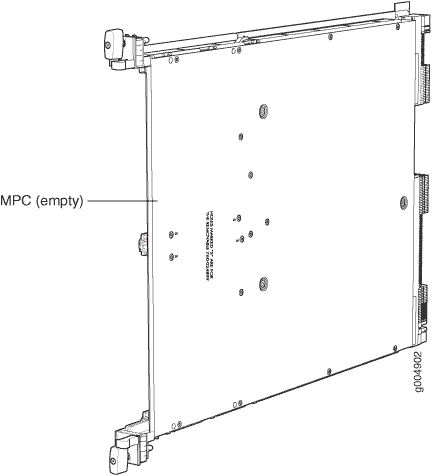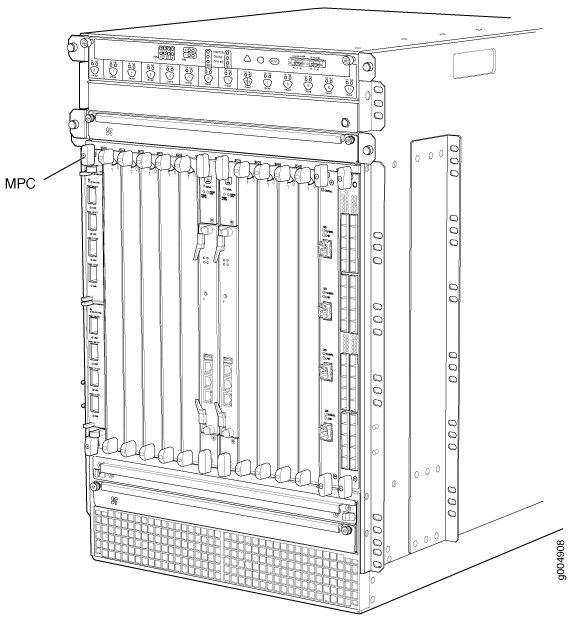MX960 Modular Port Concentrator Description
Modular Port Concentrators (MPCs) provide packet forwarding services. The MPCs are inserted into a slot in a router. Modular Interface Cards (MICs) provide the physical interfaces and install into the MPCs. You can install up to two MICs of different media types on the same MPC as long as the MPC supports those MICs.
A specialized fixed configuration MPC provides higher port density over MICs and combines packet forwarding and Ethernet interfaces onto a single line card. The fixed configuration MPC is inserted into a slot in a router and contains no slots for MICs.
MICs receive incoming packets from the network and transmit outgoing packets to the network. During this process, each MIC performs framing and high-speed signaling for its media type. Before transmitting outgoing data packets through the MIC interfaces, the MPCs encapsulate the packets received. Each MPC is equipped with up to four Junos Trio chipsets, which perform control functions tailored to the MPC’s media type. The MPCs interface with the power supplies and Switch Control Boards (SCBs). You must install redundant SCBs to support full line rate.
The MX960 router supports up to 12 MPCs. You must install a high-capacity fan tray to use an MPC. For power requirements, see Calculating Power Requirements for MX960 Routers.
The router has 11 dedicated line-card slots for DPCs, MPCs, or FPCs. MPCs install vertically in the front of the router. The dedicated slots are numbered 0 though 5, and 7 though 11, left to right. An additional multifunction slot labeled 2/6 supports either an SCB, a DPC, an FPC, or an MPC. An MPC can be installed in any slot that supports MPCs. You can install any combination of MPC types in the router.
When a slot is not occupied by an MPC or other line card, you must insert a blank DPC panel to fill the empty slot and ensure proper cooling of the system.
MPCs are hot-removable and hot-insertable. When you install an MPC in an operating router, the Routing Engine downloads the MPC software, the MPC runs its diagnostics, and the Packet Forwarding Engines housed on the MPC are enabled. Forwarding on other MPCs continues uninterrupted during this process.
Figure 1 shows a typical MPC supported on the MX960 router. Figure 2 shows an MPC installed vertically in the MX960 router. For more information about MPCs, see the MX Series Ethernet Services Routers Line Card Guide.


MPC Components
Each MPC consists of the following components:
-
MPC card carrier, which includes two MIC slots (excludes the fixed configuration MPC).
-
Fabric interfaces.
-
Two Gigabit Ethernet interfaces that allow control information, route information, and statistics to be sent between the Routing Engine and the CPU on the MPCs.
-
Two interfaces from the SCBs that enable the MPCs to be powered on and controlled.
-
Physical MPC connectors.
-
Up to four Junos Trio chipsets, which perform control functions tailored to the MPC’s media type.
-
Midplane connectors and power circuitry.
-
Processor subsystem, which includes a 1.5-GHz CPU, system controller, and 1 GB of SDRAM.
-
Online button which takes the MPC online or offline when pressed.
-
OK/Fail LED on the MPC faceplate. For more information about LEDs on the MPC faceplate, see the MX Series Interface Module Reference .
Two LEDs, located on the craft interface above the MPC, display the status of the line cards and are labeled OK and FAIL.
